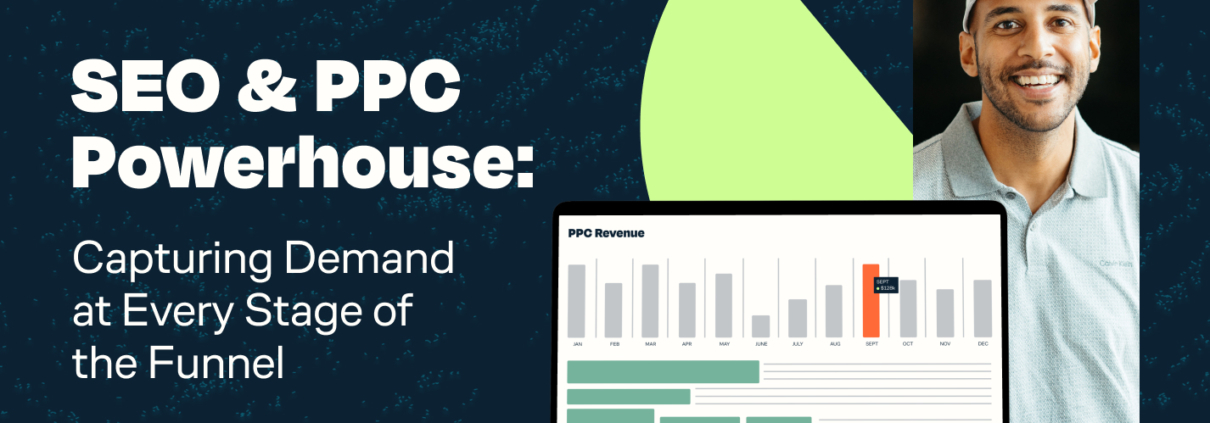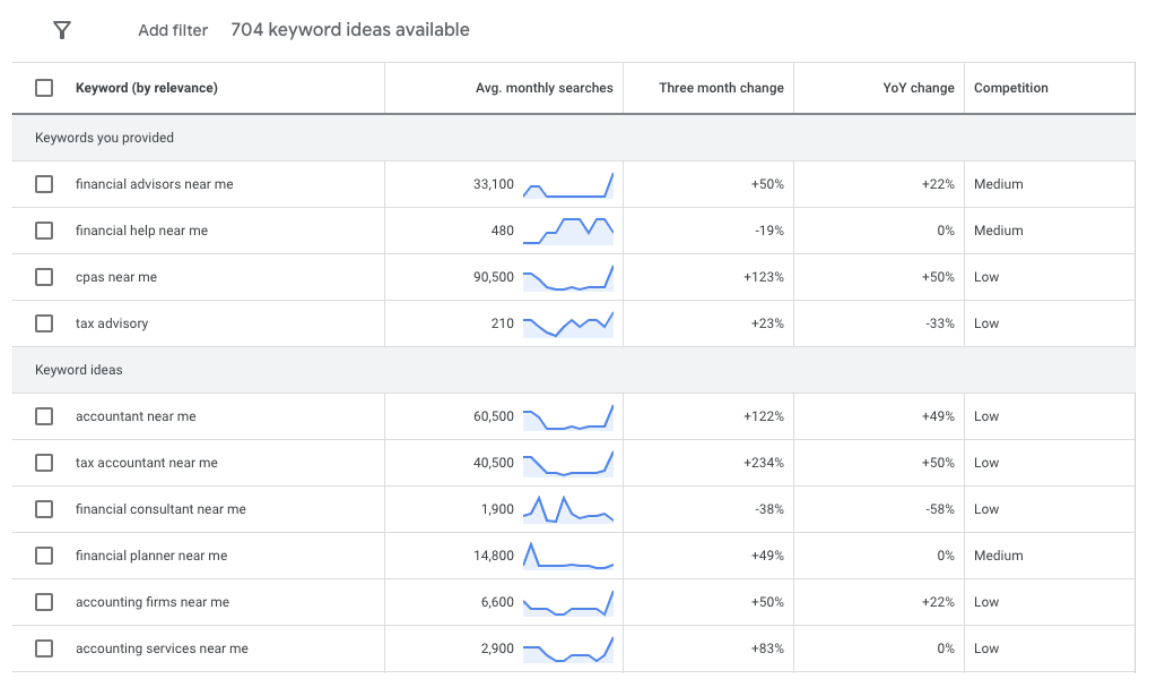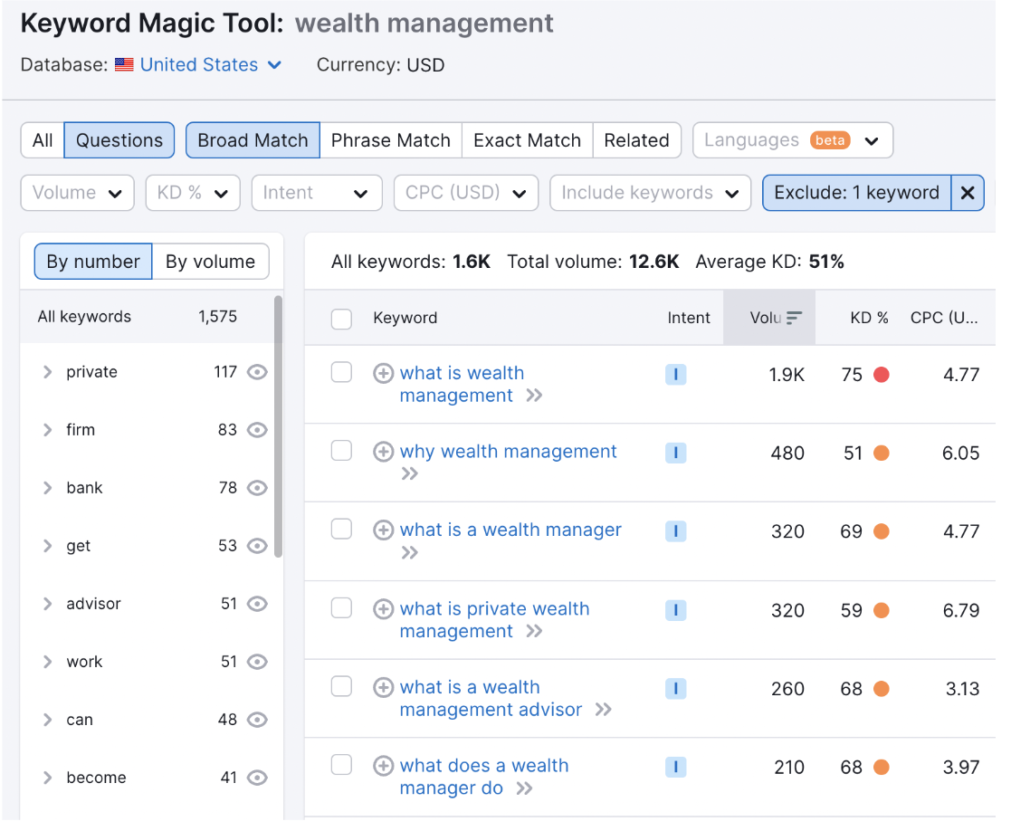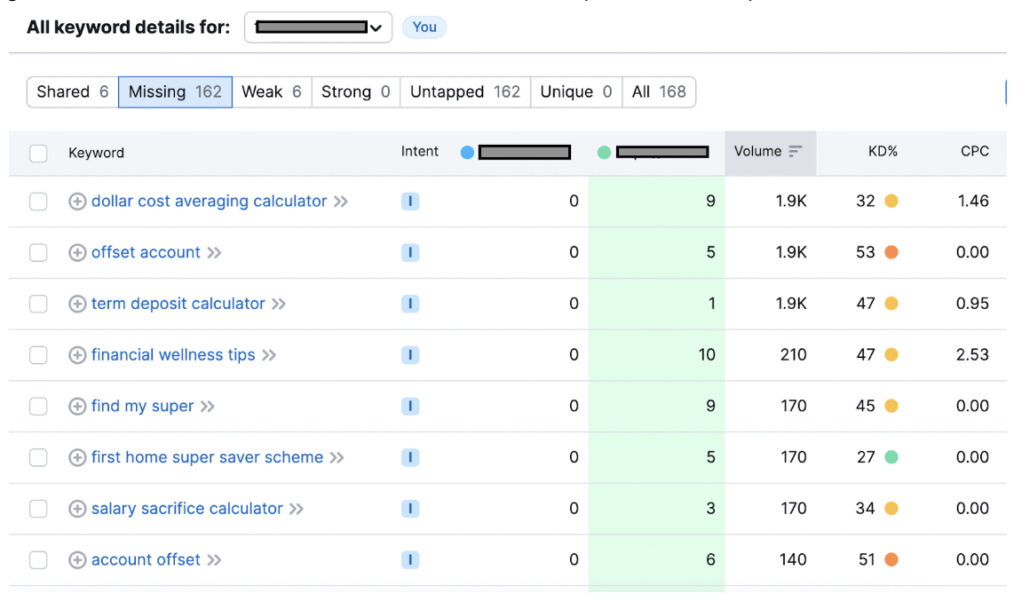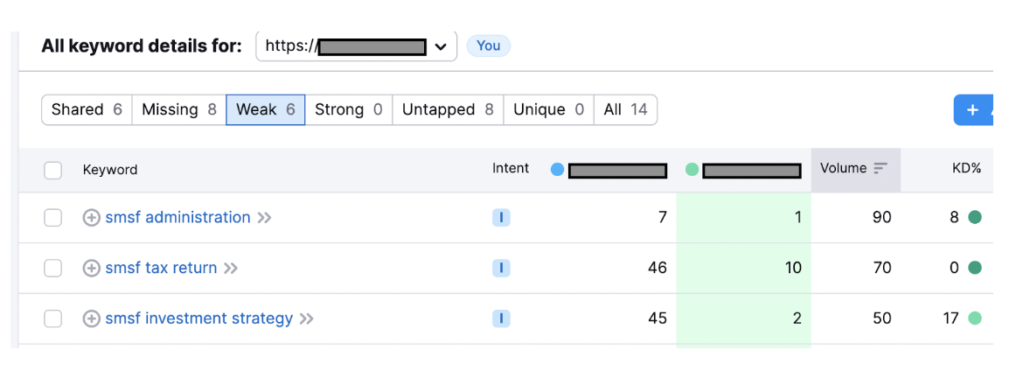SEO & PPC Powerhouse: Capturing Demand at Every Stage of the Funnel
Understanding the avenues users enter your site through is invaluable. Maybe social channels drive quality traffic to the site. For well-known brands, direct traffic may be the main driver. A large percentage of most businesses however are fueled by search terms targeted via organic or paid channels. Both of these channels play an incredibly important role in attracting users, but not just any users – quality ones.
High-intent audiences are more likely to take the actions you want them to take on your site. Both PPC and SEO offer ways to attract these ideal users.
But how do we bring these efforts together to formulate efficient, actionable insights? What things can a brand do to capture as much existing demand as possible? Are there ways for your business to create demand? Can we increase efficiencies and drive more conversions in tandem?
We set out to answer all of these questions to give a look into how our team and growth marketing agency thinks about Keyword Research through the lens of PPC Management and SEO. They can sometimes be seen as two different worlds, but when you combine forces, powerful things start to happen.
Dominating All Stages of the Funnel with Paid Keyword Targeting
Let’s start by taking a look at Paid Keyword Research, the bulk of which relates to Google Ads specifically. Every partner is in a different stage of their business. Some are more established, looking to scale Paid Search efforts with new keyword targets. Some are brand new and are not even sure what kind of volume is available for a PPC channel. Many, though, are somewhere in between. At the crossroads of maximizing existing volume & creating new demand.
Capture Existing Search Volume within Your Growth Strategy
What demand is already out there that you can capitalize on? Is Paid Search already running with any success, and if so, can you expand on the current high value keywords? Answering these questions is the first step in Tuff’s research, regardless of the industry. Although there are many tools available, we mainly use two for this step of research; Google Keyword Planner and SEMrush. Both of these give us a holistic view on volume as well as deeper looks into the industry at large.
First let’s take a look at the current Google account, if there is one for our partner. We set out to identify what we call High Value Keywords that exist in the account already. These keywords, as the name suggests, are the targets that are working best for the partner. Maybe they have the most efficient CPA. Or an incredibly high Conversion Rate. No matter the KPI, the most important metric to look for in these High Value Keywords is Impression Share. If Impression Share is below 70-80%, there is room to scale immediately. This can be done by simply allocating additional budget, or focusing on making optimization changes that affect Quality Score. The goal is to maximize the success of these keywords. Find the top performers and become the industry leader for all users searching those out. Capture existing demand.
After we see the areas of what is working already, we go to the true depths of Keyword Research, and this is where Keyword Planner comes in. Below is an example of how it works. We provide a few keywords relevant to the partner, in this example we provided a few phrases surrounding financial advice. The key is to start with high intent keywords. These give the best indication into how much demand is available at this very moment. Evaluating performance at this stage of the funnel is based on revenue and last click conversions.
Google then spits out hundreds of keyword ideas that are related to what we are looking for. We can get a gauge on monthly volume immediately, as well as an idea of how competitive these keywords may be. Much of our time is spent in this stage. Sourcing the right keywords to start bidding on takes some time. Not every keyword available is going to be relevant. Again, our focus at this stage is to maximize the use of high intent keywords. This is where Paid Search excels the most.
The highlight of Google Keyword Planner is its forecasting ability. Once you choose the keywords that you would like to target, you have the ability to see a general forecast based on a certain daily budget. This helps paint a picture of the existing demand volume available, but more importantly, how much it may cost. Tuff uses a report like this as an immediate jumping off point with a partner. “If we spend x amount on these keywords, this is the performance we can expect.”
Perform Keyword Research for the Competitive Landscape
An invaluable part of the keyword research process, that has implications across all Paid and Owned Media, is Competitor Keyword Research. What are the top competitors in your industry spending money on? Where is their focus and how can you tailor your growth marketing strategy to capitalize on that? SEMrush is our go to for this lift.
We could write multiple posts about the capabilities of SEMrush, but for right now we are going to focus on the Advertising Research tab under Domain Analytics. Here we can input any URL to see information regarding spend on Paid Search platforms. We start with totals. The monthly estimate for spend, traffic from that spend, and then available volume associated with the keywords that are being targeted.
Digging deeper, we can then export the full list of keywords that are being targeted. This is where the true value comes in. Not only are we able to see what the competition is bidding on, we can even take a look at the ad copy they are using. This data can be utilized across all growth marketing aspects. PPC, SEO, Social, CRO, and Creative. If you can better understand the competition, you can better understand how to beat them.
For businesses that don’t exactly know who their competitors are, we can use SEMrush to find them. Below is a list of competitors we found for Amazon. This is a high level glimpse into the industry. All of this information surrounding competitors is taken into account when developing a Growth Strategy across all channels.
Create Demand With Brand Strategy and Broad Keyword Targeting
The third and final pillar of Paid Keyword Research is demand creation. We have now maxed out the existing demand for high-intent terms, let’s expand. The main thing to keep in mind with this stage of strategy is that this is a long-term investment. Users are not going to convert immediately through keywords that fall into this Top of Funnel bucket. This would fall under Brand Awareness instead of Performance marketing.
These are a few steps to how we go about a demand creation strategy for Paid and Organic keyword targets alike:
- Identify low intent and long tail keywords. Look for terms that are easy to rank for organically and terms that have low CPC’s on Paid channels. Some tactics you can utilize on Google Ads are Dynamic Search Ads and Broad Match Keywords.
- Develop a content strategy focusing on these keyword targets. Content built around keywords that have low competition, but are still relevant, are an easy way to improve Organic performance.
- Allocate a low percentage of overall Paid budget to targeting broad and long tail keywords. These are to improve Brand Awareness and are not to be evaluated on last click conversion metrics. Instead, impressions, CPCs, and volume is what to monitor. Tip: Set a Max CPC on Google Ads to better control costs. We aim to have CPCs around 10% of high-intent keywords.
Tactics like this have long lasting effects across all channels. Performance and Brand tactics work hand in hand this way, pushing users in the right direction. A full-funnel approach takes time, but the upsides are certainly worth the effort.
A Full-Funnel Approach to SEO Keyword Research
Both paid and organic search aim to drive traffic and conversions using keywords. But the nature of the two channels influences the best way to capture demand. Organic search offers the ability to target users at multiple stages of the buyer journey with a mix of informative and commercial-focused content.
Here’s how we approach SEO keyword research for a holistic strategy that supports PPC efforts.
Examine Current Keyword Rankings
To lay the groundwork for a solid strategy, It’s important to understand where we’re starting from an organic search perspective. To do so, we’ll take a look at current keywords rankings to:
- Learn what keywords are driving traffic to the site
- Find keywords that are being incorrectly targeted (misaligned search intent)
- Uncover low-hanging fruit keywords on pages 2 and 3
Often, a brand has some visibility for keywords around a core service but is not maximizing traffic and conversion potential. Common mistakes include not covering the topic in-depth, creating content that does not align with searcher intent, and creating pages that don’t target specific, high-value keywords.
At this stage, we can pull a list of top-performing non-branded keywords to identify areas to capitalize on in our strategy. For example, say a financial advisory company is ranking well for the term wealth management on a service page.
A top spot on page one is great. But if the brand is not targeting terms higher up in the funnel, they are missing out on the higher traffic volume and increased brand awareness that comes with speaking to people earlier on in the journey. Using the questions filter in a keyword research tool, we can filter to find common queries around wealth management.
Questions around what wealth management is and what a wealth manager does would make for informative top of funnel content in our organic strategy. These keywords don’t have immediate commercial intent so we won’t dedicate a large amount of the PPC budget towards them.
While paid is great for hyper-targeting ready-to-buy users, organic offers the perfect opportunity to target those earlier in the journey, getting your brand in front of users early on so they are familiar with it when they reach the decision phase. This way, you don’t spend a large portion of the PPC budget on terms that are not immediately profitable.
Conduct Competitor Analysis
No SEO strategy is complete without competitor analysis. Here, we’ll take a look at what pages and keywords are performing well for competitors.
The goal of a holistic SEO strategy is to drive relevant, high-value traffic to a site. So we need to look at multiple metrics to determine which competitor keywords are worth going after. These include search volume, difficulty, top 10 ranking pages for the term, and user intent.
There are multiple components to this portion of SEO keyword research One helpful step is to perform a keyword gap analysis. This essentially uncovers relevant keywords that:
1. Your competitors are ranking for and you are not
or
2. Your competitors are outranking you for
In our financial company example, the firm has no rankings for “term deposit calculator” which generates almost 2000 searches a month while the competitor firm is in position 1.
In instances like this, creating new content to fill in this gap is the way to go. Yes, new content will take a while to rank organically. But the upfront effort results in ranking for a keyword that is proven to drive relevant traffic to businesses like yours. This approach allows you to siphon off traffic from competitors.
In other cases, competitors are outranking a company for high-value keywords. Take for example, the keyword “smsf administration”. The brand is in position 7 on the SERP spot while its competitor is in position 1, meaning it’s garnering the lion’s share of clicks and impressions. Since this topic is core to the services offered, it makes sense to target it in an organic strategy.
In this instance, the best strategy is to optimize existing content to better match search intent and compete with top-ranking pages. Fortunately, content optimizations typically see faster movement in rankings than new content.
This step also offers a chance to collaborate with the PPC team. Say, for example, that the PPC team has been A/B testing ad copy and CTAs for the service that the SEO team is updating a page around. Use this data when creating content on the new page. Leveraging test result data creates cohesive messaging for a better user experience across multiple touch points.
Target Keywords at Multiple Stages of the Buyer Journey
A well-rounded organic strategy should include a mix of informational keywords and high-intent ones to satisfy queries at multiple stages of the buyer journey.
Using Organic Search to Build Awareness
What are people searching really early on in the journey? While these users won’t convert on the spot, the search is related to the offering so getting in front of them before they are in the decision mindset is beneficial. Generating awareness with those who are high in the funnel is a smart long-term play. This portion of the strategy focuses on driving traffic and building brand authority rather than generating conversions.
Armed with questions from competitor research, internal customer information, and our keyword research tools, we can map the questions we find to different stages of the user journey.
The PPC Play: Since these keywords won’t lead to immediate conversions, it doesn’t make sense to spend a lot of paid budget on them. But, building brand awareness is still important. Delegate a small portion of your budget to this and mark it as a visibility play. Evaluate success based on Impressions, CPCs, and traffic to your site.
Using Organic Search to Drive Conversions
A strong organic strategy involves targeting keywords with high purchase intent. These “money keywords” are highly relevant to your offerings and are regularly searched by your target audience. Unsurprisingly, these keywords are typically quite difficult to rank for organically. In our financial advisory firm example, these keywords include:
- Wealth management services
- Financial advice in [city]
- Portfolio specialist
Now, difficult does not mean impossible. By laying the groundwork with content targeting topics higher in the funnel, your site gains authority and increases its chances of ranking for these high-intent keywords. But depending on your domain authority, ranking for high-competition keywords can be an uphill battle.
This stage is another great opportunity for SEO and PPC to work in lockstep. Look at top converting terms for paid campaigns and aim to rank in the top 3 spots for these organically. Because these terms are difficult, whittle it down to a list of 10 or so high-value keywords to focus these efforts on.
The PPC Play: Use data from campaigns to identify top converting keywords. Allocate spend to these terms, working in tandem with organic to ensure related content features aligned messaging for a seamless user experience. With both SEO and PPC efforts focused on these high-intent terms, you can maximize brand presence on the SERP.
Combining SEO and PPC to Create a Synergistic Strategy
Now that we’ve covered the keyword research phase, let’s look at how we combine paid and organic efforts. Cross Team Functionality is the goal for Keyword Research and it is important to continue evaluating progress and performance after the initial stages.
Here are a few specific areas where Tuff uses all the information above to get the most out of our Growth Marketing Strategy.
1. Use Data from Both Channels to Inform Strategy
Good news. Utilizing paid and organic search in your marketing mix means you’ll have double the data to pull insights from.
On the organic side, top-performing pages can provide insights into the terms and pain points that most resonate with users. A high organic ranking signals that content is matching search intent and delivering value. Keywords with high organic performance should be added to paid campaigns and tested to see which lead to the highest conversions. This way, we double down on what’s working.
This principle works in reverse as well. On the paid side, looking at Search Term reports in Google Ads is one way to zoom in on what terms are converting well. Once we’ve uncovered key terms that are driving revenue, we can prioritize these in our organic strategy. This may include optimizing existing content to include the terms or creating new content around these terms that align with search intent.
By cross-analyzing data and using this to inform keyword strategies, a brand can cover the SERP for terms that matter most to its bottom line.
2. Leverage PPC & SEO to Dominate the SERP
Another reason SEO and PPC are better together? They allow a brand to maximize visibility in search results.
Paid ads will always be placed above organic results, making them the first thing users see. So investing in paid can secure your brand a spot of prime real estate on the SERP. However, organic content brings an element of authority as users tend to trust organic over paid ads. To get the best results for important keywords, combine both strategies so you’re top of mind for searchers.
3. Target Expensive Terms with SEO
Certain keywords come with high CPCs that get more expensive over time. In these situations, it’s helpful to target these terms organically as part of an SEO content strategy. Targeting these high-value keywords in your organic search strategy is a smart long-term play. The time it takes to rank will depend on factors including your site’s domain authority and the top 10 ranking pages.
4. Boost Organic Efforts with PPC Retargeting
Many users will find your brand through organic search, but what happens when they leave without taking action? Paid offers the chance to retarget specific users so that organic efforts are bolstered. Because these users have demonstrated an initial interest in the brand, they are farther in the pipeline, making them a better bet for PPC spend.
SEO & PPC: A Match Made in Marketing Heaven
Sherlock and Watson. Movies and popcorn. Some things just work better together. When it comes to maximizing your marketing ROI, combining PPC and SEO are a dynamic duo on that list. These marketing channels complement one another beautifully when looking at any stage of the marketing funnel. With more powerful insights into user behavior, you can drive conversions and increase efficiency.

Chris is a PPC Strategist based in Nashville, Tennessee. When he’s not scaling Google Ads & YouTube campaigns, he enjoys longboarding, tinkering with automation tools, and a little bit of gaming.
